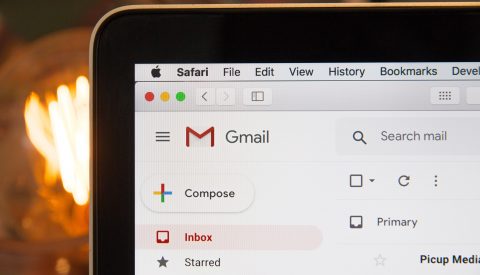No question about it: the coronavirus changed the way we lived and worked throughout the first half of 2020. While hospitals and healthcare centers were working to flatten the COVID-19 curve, NineStar Connect was working to stay ahead of it by providing members with the service they needed to navigate their new normal.
“We upgraded all of our fiber customers to GigE service for three months in order to help them get through the workday and the school year,” said Brian Dowden, director of operations for NineStar Connect.
With social distancing measures in place and public gatherings canceled for weeks on end, Hoosiers turned to their devices for work, education, entertainment, and human connection. Luckily, NineStar offers the fastest and most reliable fiber optic Internet service in the area.
“I can’t say enough about them,” said NineStar member Brandon Hayes. “Even though everyone was on the same network, the quality of service was fantastic.“
Hayes is a network administrator for the Mt. Vernon Community School Corporation, which uses NineStar’s high speed Internet service at all six of the schools in the district. He lives in Eastern Hancock with his wife and two children and said having a fiber connection, especially during the current crisis, made all the difference in the world as they telecommuted for work and helped their students stay on track.
“We set up a little corner of the house so that we could do our work. The service didn’t break down once and the quality never skipped a beat,” he said. “Of course we were lucky that our children were in the sixth and ninth grades. I imagine it was a lot harder for parents of younger children.”
That was the whole idea. According to Dowden, the average smart home has approximately 42 devices connected to the internet at any given time. This includes: desktop computers, laptops, phones, tablets, security systems, TVs, gaming systems, and more. However, when you have several people at home all trying to access the internet at the same time and on the same bandwidth, it can adversely affect the speed at which they can connect.
“They can still get the information that they need, but at a slower rate,” Dowden said. “By upgrading everyone to GigE for a period of time, we were able to make sure that they could get what they needed when they needed it.”
Luckily, NineStar’s network already has a strong backbone that allowed the co-op to ratchet up the service without any additional difficulty. Dowden says that NineStar is always looking at what people will need three-to-five years down the line so that when unforeseen circumstances occur; they are ready to meet the moment.
“It’s not a reactionary thing,” he said.
Not only did NineStar turn up the profile for everyone in the service area, but they also found ways to help those who did not have internet access. By adding internet extenders to the schools’ connections, it allowed students to connect to their campus network just by sitting in the parking lot.
“We don’t just help out our members, but we look out for the whole community,” Dowden said.
Without question, the pandemic has forever altered the way some people live and work, but to what extent remains to be seen. Hayes said his wife Becky, who works for the Indiana Department of Environmental Management (IDEM) always said she could do her job from home, but never had the opportunity to do so until now. She proved she could still be productive and has since been approved to work from home on a permanent basis.
“I’m really glad for her,” Hayes said.
Dowden says for business owners that have always had a moderate web presence, the pandemic has forced them to look beyond their brick-and-mortar locations in order to serve the needs of their customers.
“What we have seen is a reliance on the web and how the internet is now just as vital as any other utility,” he said. “I think it will have a long-term effect on how businesses are set up and how you capitalize on the impulse shopping that happens when someone is browsing in the store. NineStar is already thinking about what our members will need when we get back to normal, but one thing is certain; we will continue to play a big role in these transitions and we will always strive to stay one step ahead of them.”



